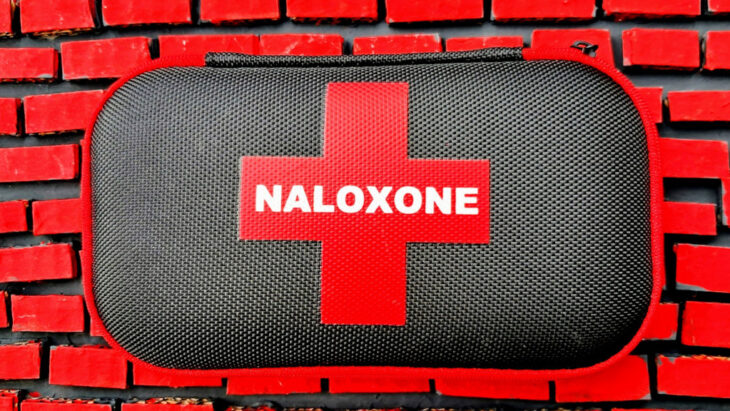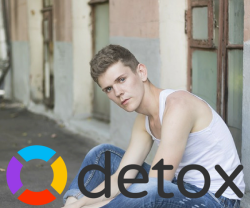How Does Harm Reduction Compare to Quitting Cold Turkey?
Published: 10/14/2025

Harm reduction is a term used to describe any practices or programs designed to reduce the level of harm experienced from behaviors that can have problematic effects.
It is most commonly associated with alcohol and drug abuse, but can also apply to many other high-risk behaviors and decisions that can have negative consequences, like unsafe sex and self-injury.
One example of a harm reduction service is a Syringe Services Program (SSP). This is a site that allows intravenous drug users to turn in their used needles and syringes in exchange for clean ones.
Studies show that individuals who use SSPs are five times more likely to enter an addiction treatment program and around three times more likely to stop using drugs than people who don’t use these services.
Though scientific data reveal the benefits of harm reduction over quitting cold turkey, this public health strategy remains highly controversial in the U.S. Many people believe it can encourage, rather than discourage, drug use.
Quitting drugs and alcohol cold turkey may be one way to achieve sobriety, but evidence reveals that relapse rates associated with quitting cold turkey are often higher than those associated with harm reduction.
Quitting cold turkey can put drug and alcohol users at great risk for physical and psychological complications, especially those heavily dependent on drugs and alcohol or who have been using these substances for a long time.
What is harm reduction, and how can it benefit people who are suffering from addiction? Here’s what you need to know about harm reduction programs for addiction, and how to go about getting help for your substance use disorder (SUD).
Call Detox.com today to find addiction recovery programs near you!
How Does Harm Reduction Work?
Harm reduction supports any steps in the right direction of sobriety, no matter how small, with the ultimate long-term goal being abstinence. For example, reducing your alcohol intake from 10 drinks per day to just three drinks per day is viewed as a major improvement by harm reductionists.
When tied to drug use, harm reduction recognizes and accepts that many people who use drugs and alcohol may be unwilling or unable to quit using these substances due to factors like addiction.
At the same time, many who struggle with addiction are often unwilling or unable to receive treatment for reasons such as stigma and lack of financial resources. Harm reduction programs can help these individuals reduce their risk for diseases and overdose, while opening the door to treatment options that can help them become healthier and addiction-free.
Examples of Harm Reduction Techniques
Some harm reduction techniques are widely known and have been used in the U.S. for many years. For instance, harm reduction in the form of condom distribution can reduce the spread of HIV and sexually transmitted infections caused by unsafe sex.
Nicotine patches are a form of harm reduction for tobacco users that release nicotine into the skin so smokers can receive nicotine without smoking. Some harm reduction programs even help people who suffer from binge eating by replacing junk foods with healthier food options that lessen their risk for conditions like obesity, heart disease, and diabetes.
Common harm reduction techniques for drug abuse include:
- Needle exchange programs
- Syringe services programs
- Nicotine replacement
- Opioid substitution
- Fentanyl test strips
- Driving prevention campaigns
- Overdose prevention/naloxone
As mentioned, syringe services programs provide intravenous drug users with clean, sterile needles to prevent infections and the spreading of fatal diseases like HIV and hepatitis C. Sterile needles are also often available at safe injection sites. These are locations where drug users can get high while being monitored by trained medical staff who can intervene if an overdose occurs.
Opioid substitution is more commonly known as medication-assisted treatment, or MAT. MAT substitutes the opioid of abuse with FDA-approved medications that work similarly to opioids, but that interact with brain receptors differently to reduce cravings and other withdrawal symptoms.
People who receive MAT may be prescribed methadone, buprenorphine, and/or naltrexone at an inpatient or outpatient opioid recovery center.
History of Harm Reduction for Drug Use
Harm reduction for drug use in the U.S. came largely into practice during the 1980s, when the country began losing thousands of Americans to its AIDS epidemic. Between 1981 and 2000, 774,467 people in the U.S. had been diagnosed with AIDS, and 448,060 of these individuals had died.
Harm reduction became crucial to reducing the transmission of HIV and AIDS among drug users, though the crack cocaine epidemic going on during this same period made it difficult for harm reductionists to implement programs that seemed to encourage drug use.
Needle exchange programs began operating at the state and local levels during the late 1980s to provide drug users with sterile needles and reduce the risk of AIDS and other blood-borne infections. Today, there are around 850 needle exchange programs operating in the U.S.
Opioid substitution therapy and MAT have been used in the U.S. to treat opioid addiction since the 1960s, when scientists learned that methadone could reduce opioid cravings and withdrawal for up to 36 hours. Other medications used as part of MAT are buprenorphine and naltrexone. These were approved by the FDA for use in treating opioid addiction in 1981 and 1984, respectively.
Why Is Harm Reduction Controversial?

Though many reports show that harm reduction can help reduce negative consequences associated with drug-using behaviors, many Americans and policymakers remain on the fence about whether to support these programs.
There are also many misconceptions about harm reduction that keep Americans from ruling in favor of these programs for their communities. For instance, many believe that harm reduction will increase drug abuse and crime rates in nearby neighborhoods and lead to a higher number of drug overdoses.
Many who oppose harm reduction tend to believe that these strategies enable continued drug abuse and addiction, and put undue financial strain on federal, state, and local resources.
Here’s a closer look at two major controversies behind harm reduction.
Debate #1: Harm Reduction Enables Drug Use
Many against harm reduction believe it enables drug use by attracting addicts and giving them tools like clean needles to support their addiction.
These individuals also believe that people who suffer from addiction should quit drugs and alcohol cold turkey and get help in the form of abstinence-based addiction treatment.
Unfortunately, quitting cold turkey is highly difficult for those unable to receive addiction treatment, and can even be life-threatening for some drug users. Plus, drug use disorders are already associated with a relatively high relapse rate of between 40 and 60%.
However, many harm reduction programs do not cause an increase in drug abuse rates. Instead, programs like safe injection sites and needle exchanges simply help people practice safer drug-using behaviors.
Harm reduction helps restrict drug use to supervised facilities overseen by medical staff and keeps drug use from occurring in places that may involve children, teens, and other vulnerable community members.
Debate #2: Harm Reduction Wastes Valuable Resources
Some believe harm reduction programs consume valuable funds that could otherwise be spent on addiction treatments, prevention, awareness campaigns, and other abstinence-based solutions. However, newer evidence reveals that harm reduction programs for drug use can save up to billions on the federal and state levels.
Harm reduction also offers people a safe alternative way to reduce the financial impact their addiction may have on themselves, their loved ones, and their communities.
Those who aren’t quite ready to overcome addiction or who lack motivation to enter treatment right now can still benefit from harm reduction. These services create a safe, controlled environment for drug use and lower the risk of a fatal overdose.
When these individuals are finally ready to overcome addiction, they have front-row access to treatment professionals who can work with them on becoming sober.
How Effective Is Harm Reduction?
A study conducted on harm reduction for alcohol abuse among college students found that those who participated in the Alcohol Skills Training Program learned how to safely and responsibly drink alcohol, and reduced their intake by between 40 and 50% at a two-year follow-up.
Another study examined the drinking patterns of people experiencing homelessness who were addicted to alcohol and placed in either an abstinent housing environment or an environment in which they could safely drink.
Results showed that homeless people placed in non-contingency homes ended up drinking far less alcohol anyway, and saved the government an average of $2,449 per person per month in medical and social service expenses.
A higher number of harm reductionists in the U.S. are now stocking up on fentanyl test strips to help drug users avoid a deadly overdose.
Fentanyl test strips can screen for drugs like cocaine, crystal meth, and heroin for fentanyl so people know if their drugs have been laced or mixed with this opioid that is up to 50 times stronger than heroin.
A recent study found that when people learned their drugs contained fentanyl, 70% of those individuals modified their drug use behavior by using the drugs more slowly, using the drugs with people who had naloxone, or not using the drugs at all to prevent an overdose.
How Does Harm Reduction Compare to Quitting Cold Turkey?
Harm reduction embraces and accepts the fact that drug abuse and addiction are part of society, and aims to minimize the damaging effects of drug use on individuals and their communities.
Harm reduction also recognizes that drug use is complex, and that abstinence-based methods like quitting cold turkey aren’t always safe and effective for everyone. People who have a severe addiction or who have struggled with addiction for many years can experience certain withdrawal symptoms such as organ failure and death when quitting cold turkey.
People who drink heavily can experience a severe type of alcohol withdrawal called delirium tremens that can lead to seizures and death. Homeless individuals who join abstinence-based housing programs and who quit cold turkey at home are facing either the risk of complications or the risk of relapse that sends them back to the streets.
But homeless individuals who join harm reduction programs that offer non-contingency housing can slowly reduce their drinking, lower their risk for complications from alcohol withdrawal, and lessen the financial burden on taxpayers.
Common causes of relapse for substance use disorders include stress, the availability of drugs, and deciding to quit for all the wrong reasons. A relapse increases the risk for an overdose, since many drug users have lower tolerance levels after being abstinent for any amount of time.
But harm reduction can help people find new reasons to become healthier and overcome addiction without passing judgment, and without recognizing the stigma that continues to surround addiction.
Quitting drugs and alcohol cold turkey can be dangerous and is not recommended. Drug withdrawal can put excessive stress on the body and major organs, and requires additional treatment to reduce the risk for kidney and liver damage, immediate cardiac changes, and adverse changes in hormones and brain chemistry.
Fortunately, many of today’s detox treatments incorporate some harm reduction methods that can lead to a complete, successful recovery from addiction. For instance, medical detox treatments use opioid substitution or MAT to reduce drug cravings and withdrawal symptoms in people recovering from heroin and painkiller addiction.
Use the Detox.com center directory to locate nearby addiction treatment centers, or call 800-996-6135 to discuss your treatment options. You don’t need to recovery alone!

